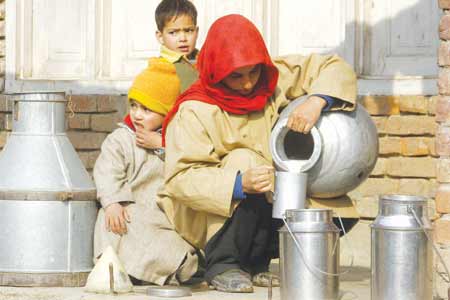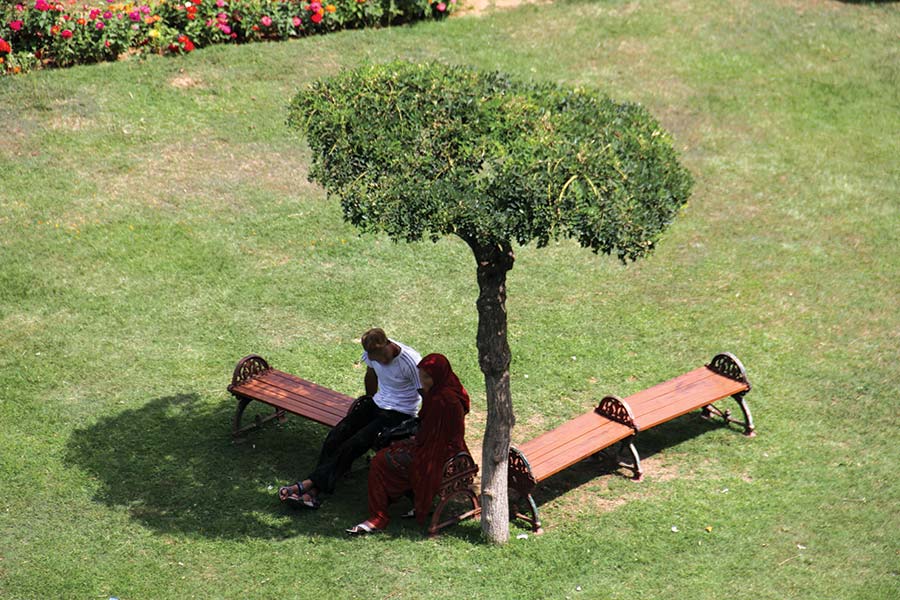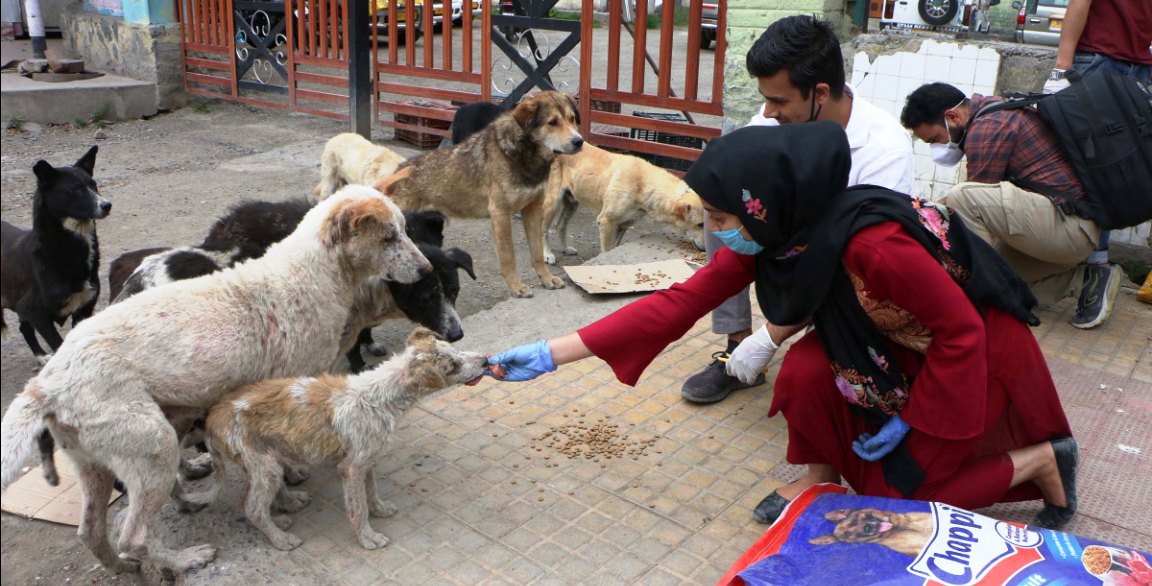by Masood Hussain
JAMMU: Despite making it a mass campaign in the last few years, the Jammu & Kashmir state has failed to emerge a self-sufficient market for the basic requirements of poultry, mutton, eggs and the milk. This is a major question mark over the Wazwaan Country’s capacity of consuming what it is unable to produce, at least to the level of its own requirements.
The four items which are basic to the routine food for most of the state population is an approximate economy of more than Rs 10,000 crore of which milk makes the most of it. Here is the detailed account of what J&k requires and how much it produces. The government on Tuesday placed on record the entire statistics about the four items. Here are the astonishing details.
J&K booked an expenditure of Rs 10871.93 crore on the four items in 2016-17, according to the official data tabled in the House. Of this, the government said, J&K imported items worth Rs 956 crore only.
Milk
One of the basic requirements of every household across the state, including vegetarians, Jammu & Kashmir, according to official documents consumed 24.68 lakh metric tons of milk in fiscal 2016-17. The consumption has improved from 22.83 lakh metric tons in 2014-15 but has gone slightly down in comparison to 25.06 lakh metric tons of mil consumption in 2015-16.

Though the mill statistics should have been in kilo-liters and not metric tones, let us assume a kilogram is equivalent to a kilogram. That means J&K consumed 246.80 crore liters of milk. Converted into value, this means an amount of Rs 7404 crore economy at the rate of Rs 30 per kilogram of milk.
The government data suggest that J&K has been managing most of its milk requirements locally. The production details suggest that the state produced 23.56 lakh metric tones in 2016-17, 24.01 lakh metro tones in 2015-16 and 21.74 lakh metric tones of milk.
Though the production details would be contested by the market, the official data said part of the consumption was managed through imports. In 2016-17 ending March 2017, the government said only 112.16 thousand metric tones was imported which is slightly higher than 109.25 thousand metric tones imported in 2015-16 and 109.04 thousand tonnes in 2014-15.
This means only 11.216 crore liters were imported in 2016-17 which would cost Rs 336.48 crore at the rate of Rs 30, a kilogram. This means the deficit in the milk requirements within the state resources are quite thin.
Eggs
J&K has more than 12.5 million population as per the census 2011. The official data suggest that the state consumed 1209 million eggs in 2016-17, which is slightly lower than 1269 million in 2015-16 and 1186 million in 2014-15. This means 120.9 crore eggs in 2016-17, ending March 2017.
Eggs are basic to the food of every family, even in vegetarian families as well. Calculations suggest that it is worth a fortune. If an egg is taken at the face value Rs 5, it means J&K spent Rs 603 crore on its breakfast in 2016-17.
 Of this fortune, how much is the Jammu & Kashmir state managing locally? The data suggest that the production of eggs in the state were to the tune of 429.04 million in 2016-17, 484.60 million in 2015-16 and 481.34 million in 2014-15.
Of this fortune, how much is the Jammu & Kashmir state managing locally? The data suggest that the production of eggs in the state were to the tune of 429.04 million in 2016-17, 484.60 million in 2015-16 and 481.34 million in 2014-15.
To manage the surging demand, J&K has to rely heavily on the imports. The imports are quite huge: 780 million eggs in 2016-17, 784.3 million in 2015-16 and 705 million in 2014-15.
A layman’s calculation suggests that J&K produces barely one-third of its eggs requirements. Two-third of the consumption is managed through imports which means a capital flight of nearly Rs 400 crore to non-local suppliers, mostly in Punjab and Haryana.
Poultry
Chicken is a huge item in the daily food, mostly in the non-vegetarian homes. Kashmir as tourist destination surges the requirements every season.

So how much is the consumption of the chicken in the state? Official date submitted by animal and sheep husbandry department suggests that J&K consume 740 lakh kilograms of poultry meat in 2016-17 which is slightly lower in comparison to the actual consumption of 765 lakh kilograms in 2015-16 and 511.94 lakh kilograms in 2014-15.
How much is that? This means 76.50 crore kilograms in 2016-17.
Assuming that a kilogram of poultry costs Rs 125 in the market, it means a yearly turnover of Rs 956.25 crore.
But how much of it is local. Most of it, if one goes by the data that was placed before the House. The government said that the state produced 602.84 lakh kilograms locally within the state in 2016-17, which, however, is slightly less if compared to 640.95 lakh kilograms in 2015-16 and 594.79 lakh kingdoms in 2014-15.
The data reveals that the state has greatly managed its poultry requirements locally: to the tune of 81.84 percent, leaving just a bit less than one-fifth to the outside producers.
On imports, the state government gave an interesting response. In 2016-17, the government said, J&K imported 93.1 lakh boiler birds in addition to 22.9 crore culled poultry birds. The boilers imports have gone slightly higher in comparison while the culled poultry has fallen down slightly. In 2014-15, J&K imported 55.1 lakh broiler birds and 29.7 crore culled poultry. A year later, in 2015-16, the imports in poultry were at 64 lakh poultry birds and 30 crore culled poultry birds. How much that means requires a lot of calculation.
Mutton
Mutton is so huge in requirement and so massive in consumption, that Kashmir, off late, seemingly has part of its identity linked to its Wazwaan. But how much is too much?

The official data suggest that J&K consumed 477.17 lakh kilograms of mutton in 2016-17, which was slightly lower than 509.46 lakh kilograms and 511.94 lakh kilograms in 2014-15. It means 47.17 crore kilograms in 2016-17.
Considering the cost of a kilogram at Rs 400, it means J&K consumed Rs 1908.68 crore on mutton alone in last financial year.
But how much of it is local? The state government says most of it is locally produced. Official data suggest that Jammu & Kashmir produced 323.57 lakh kilograms of mutton within the state – which means 67.81 percent of the consumption was managed locally in 2016-17. The production is steadily rising: 318.89 lakh kilograms in 2014-15 and 321.965 lakh kilograms in 2015-16.
So what was the exact number of sheep and goat that were imported into the state to manage the local consumption. The official data said that in 2016-17, J&K imported a total of 10.24 lakh sheep and goat which was slightly lower I comparison to 12.10 lakh animals in 2015-16 and 12.87 lakh cattle heads in 2014.15.
Analysis
While the data may require a relook especially on the part that is locally managed, the larger thing is how much of this market has grown over the years. How much of opportunities lie in this sector? Anybody’s guess.















